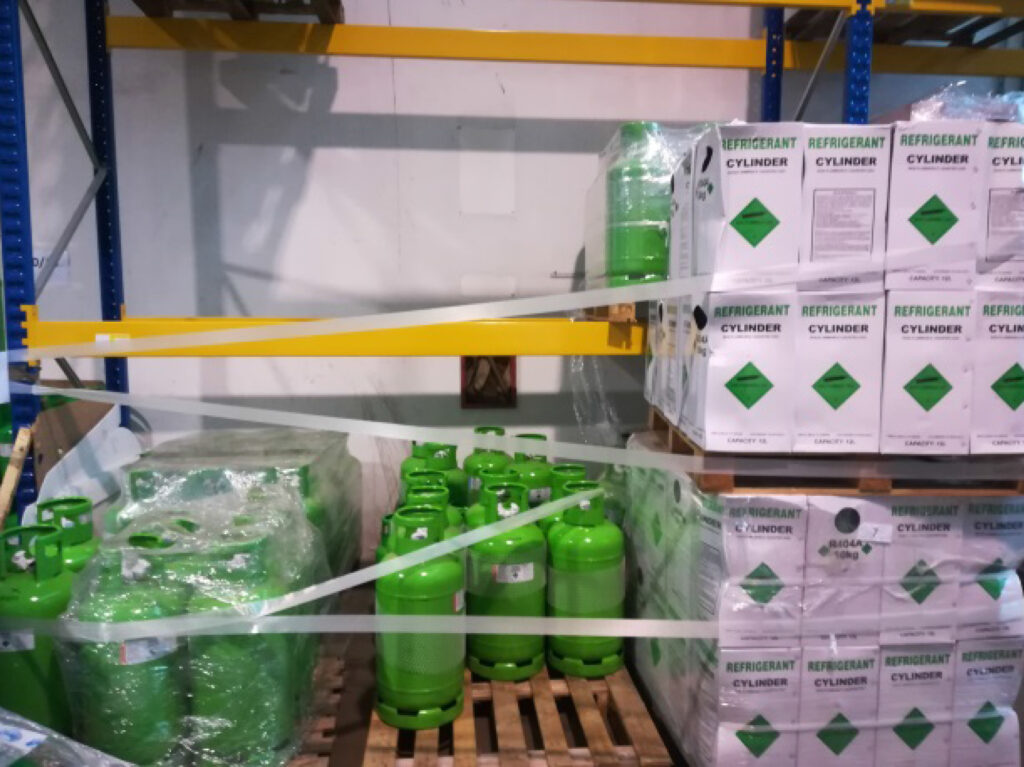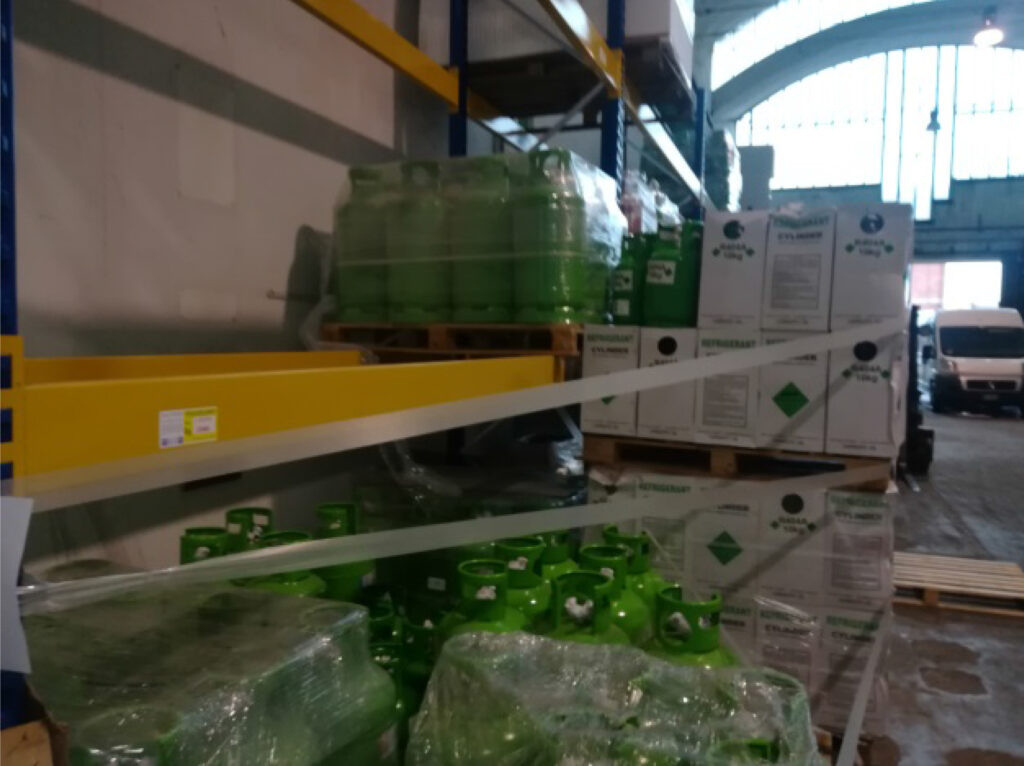Trade in illegal refrigerant hits hard
- PostedPublished 27 March 2020

The illegal refrigerant trade in Europe is extracting a heavy toll on legitimate business on both sides of the Atlantic.
As a case in point, the profits of US-based refrigerant and chemical specialist Chemours fell from $10.1 billion in 2018 to $8.4 billion in 2019, with the hydrofluorocarbon (HFC) black market cited as one of the major issues, along with other factors including broader refrigerant price drops.
Chemours president and CEO Mark Vergnano described the company’s 2019 financial results as reflecting “a challenging year on several fronts”.
He said the hurdles included “TiO2 destocking, the continued impact of illegal imports of HFC refrigerants into Europe, and operational challenges”.
The illegal imports, which are predominantly thought to originate from China, are the result of the European phase-down of high-GWP refrigerants
Reduced availability, while beneficial to the environment, had the knock-on effect of initially driving prices of the remaining permitted refrigerant skyward. This action stoked the illegal trade, bringing with it additional problems such as unknown chemicals in unsuitable containers.
A recent story by the Financial Times, titled Companies warn of huge black market in greenhouse gas, states that major refrigerant manufacturers – including Chemours, Honeywell, Arkema, Daikin and Orbia/Koura – are all losing around $765 million a year due to the illegal trade.
Compounding the issue is the lack of enforcement of the European F-gas regulations, from both the European Commission and the member states themselves.
In an interview with the Financial Times, Orbia chief executive Daniel Martínez-Valle said: “It’s like not having any regulations, or worse. What’s the use of signing commitments, adhering to protocols and going to Davos? It’s useless if we don’t have the capacity to enforce this.”
Small- and medium-sized businesses have also raised concerns. On behalf of such organisations, Portuguese member of the European Parliament João Ferreira recently asked questions in the corridors of power about regulation implementation, monitoring, penalties, importation and illegal refrigerants – as well as how to potentially reduce the burden of compliance on these smaller enterprises.
However, there have been successes in tackling the underhand trade.
Specialist UK publication Cooling Post, for example, reported that Bulgarian officials prevented the illegal import of 60 cylinders containing 634.5kg of refrigerant from Turkey on 10 December 2019.
Italian authorities have also recently seized significant quantities of illegally imported refrigerant. On 5 February, it reported that officials had seized nine tonnes of HFCs of Chinese and Turkish origin; the 960 cylinders were reported to have a value of $164,000.

Two days later, another 138 cylinders from Turkey and China – valued at $47,000 – were picked up by the authorities.
The European Commission, despite many criticisms, hasn’t been entirely idle. It recently put the spotlight on Romania after the country failed to notify the EC of its national measures on penalties for breaches of F-gas regulations.
Romania should have detailed its measures to the EC by 1 January 2017, but no information was forthcoming; as a result, the Commission started formal regulation infringement procedures against the country.
The EC stated: “The availability of appropriate sanctions under national law is a crucial element in ensuring compliance with the Regulation, and thereby limiting climate change; the availability of penalties is particularly important in view of preventing illegal trade in HFCs.”
The European Fluorocarbons Technical Committee (EFCTC) has praised both Italy and the EC’s actions.
“Italy has recently revised its regulation to bring in new penalties against HFC smuggling and has also made two seizures of HFCs in the last week,” said EFCTC chair Nick Campbell.
“We are expecting similar actions from other member states; this action from the Commission will provide the opportunity for Romania to do the same.”
To further help the ongoing crackdown, the OzonAction division of the UN Environment Programme (UNEP) has published a factsheet that outlines how to tackle illegal refrigerants.
The guide, called Dealing with Seized ODS, explains how countries that have ratified the Kigali Amendment should deal with both ozone-depleting substances (ODS) and HFCs alike; for example, it states that the agencies that have seized refrigerants should inform the governing National Ozone Unit (NOU).
The NOU will then advise how to best dispose of the chemicals, including methods such as destruction or resale.
“It is, of course, preferable to avoid the situation of having to deal with seized ODS by preventing illegal and ‘unwanted’ trade,” states the guide.
“Vigilance and cooperation at the national and regional/global level are required to prevent illegal trade in ODS.”
Euro HFC prices continue to settle
A STUDY published by independent German research institute Öko-Recherche has shown that HFC refrigerant prices are continuing to fall in Europe.
The document uses data from 84 companies – including end-users, producers and distributors – in 11 European Union states to generate an overview of market conditions.
Refrigerant prices began to fall in mid-2018, following substantial rises caused by the phase-down of high-GWP HFCs, and have continued dropping.
Öko-Recherche attributes some of this decline to oversupply towards the end of 2019, and prices are now reputed to be equivalent to those at the start of 2018.
However, prices are still significantly higher than those before the introduction of the F-gas Regulations on 1 January 2015 – regulations which focused on the phase-down of F-gas usage, reducing the availability of key refrigerants and subsequently sending prices skyrocketing.
As costs remain high, illegally imported refrigerants will continue to be an issue until more regulation and enforcement is established.
HFC-23 emissions through the roof
AN INTERNATIONAL team of scientists led by the University of Bristol in Britain has discovered that atmospheric levels of HFC-23, which has a GWP of 12,000, are climbing.
India and China are thought to be the primary sources, with HFC-23 being emitted as a byproduct of R22 production.
These emissions were supposed to be eliminated by the end of 2017, but the subsequent atmospheric figures have indicated otherwise.
“It is very likely that China has not been as successful in reducing HFC-23 emissions as reported,” said Dr Kieran Stanley, the lead author of the study.
Environmental Investigation Agency (EIA) climate policy analyst Christina Starr said: “Countries must immediately ratify the Kigali Amendment and urgently take action to comply with the commitment to destroy all HFC-23 byproduct.”
More action in USA to oust HFCs
THE governor of the US state of Maine, Janet Mills, has introduced plans to phase down the use of HFC refrigerants. The legislation, announced on 18 February, is also being enforced by Massachusetts and Rhode Island.
Mills, who was sworn in at the start of 2019, said: “HFCs are the heavy hitter of climate change, inflicting significantly more damage than CO2 in much smaller doses.
With safer alternatives now available, the gradual phase out of these super pollutants makes sense for consumers, businesses, and our environment.”
According to a release published by Mills’ office, HFC emissions could double within 20 years if left in check – and that 450g of R404A, a common refrigerant, has the same 100-year climate impact as some two tonnes of CO2.
The US Climate Alliance has also stated that the phase-down of HFCs will help keep companies competitive, create jobs and generate billions in economic value.
Federal US action to restrict HFCs has so far lagged behind state governments.
Lawsuit in Japan to protect R1234yf patents
CHEMOURS has filed a lawsuit against the Japanese chemical and materials specialist AGC over the infringement of patents on the composition of R1234yf and its associated use in automotive and refrigeration applications.
The global chemical company has made a significant investment in HFO development and production, including opening a $456 million production plant near Corpus Christi in Texas, for its Opteon-branded R1234yf in early 2019.
Both Chemours and conglomerate Honeywell hold the vast majority of patents on the low-GWP refrigerant, and Honeywell has similarly made several legal moves to protect its own assets.
Chemours vice president Diego Boeri said: “Innovation and product development are at the core of who we are at Chemours.
“By protecting our innovation, we are also ensuring our customers have access to the safe and high-quality refrigerants that they have come to rely on from Chemours and the Opteon brand.”
- CategoriesIn SightGlass
- TagsHFC phase down, HFC phasedown, HFCs, Illegal refrigerant, illegal refrigerants, SightGlass News Issue 19

